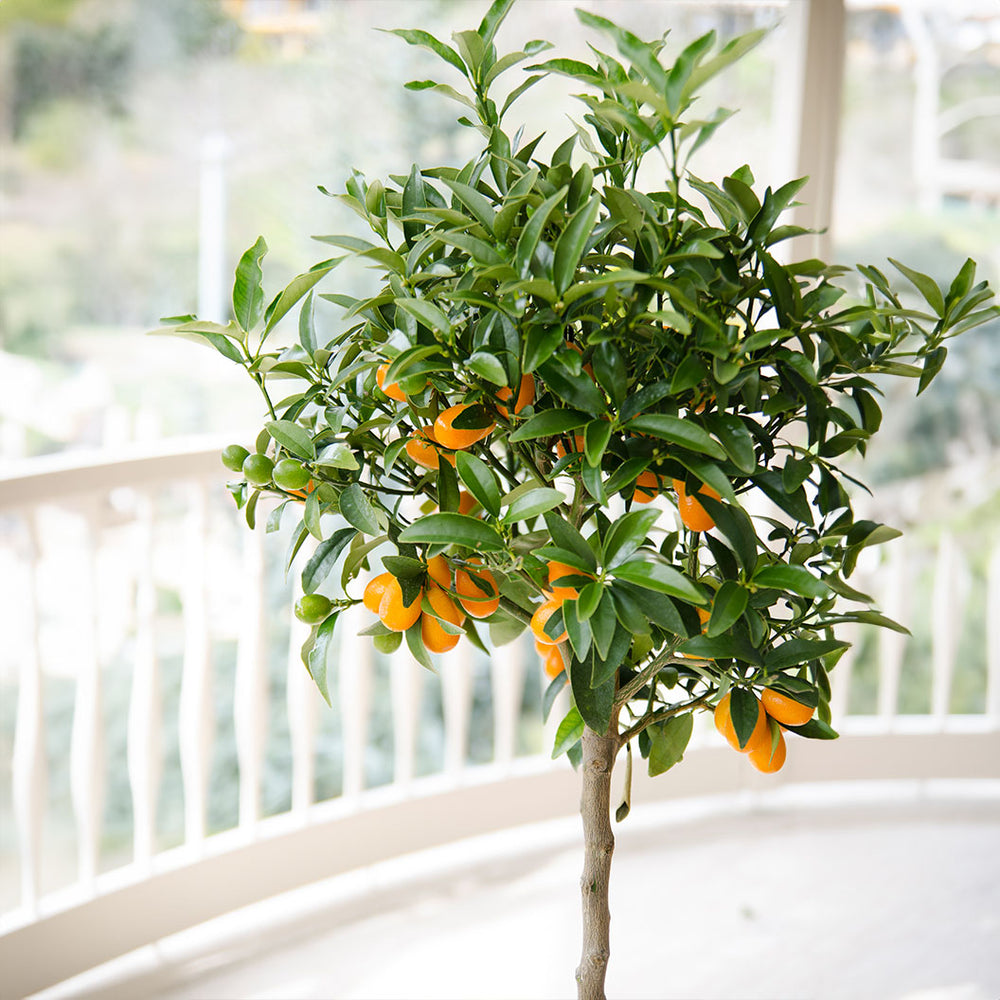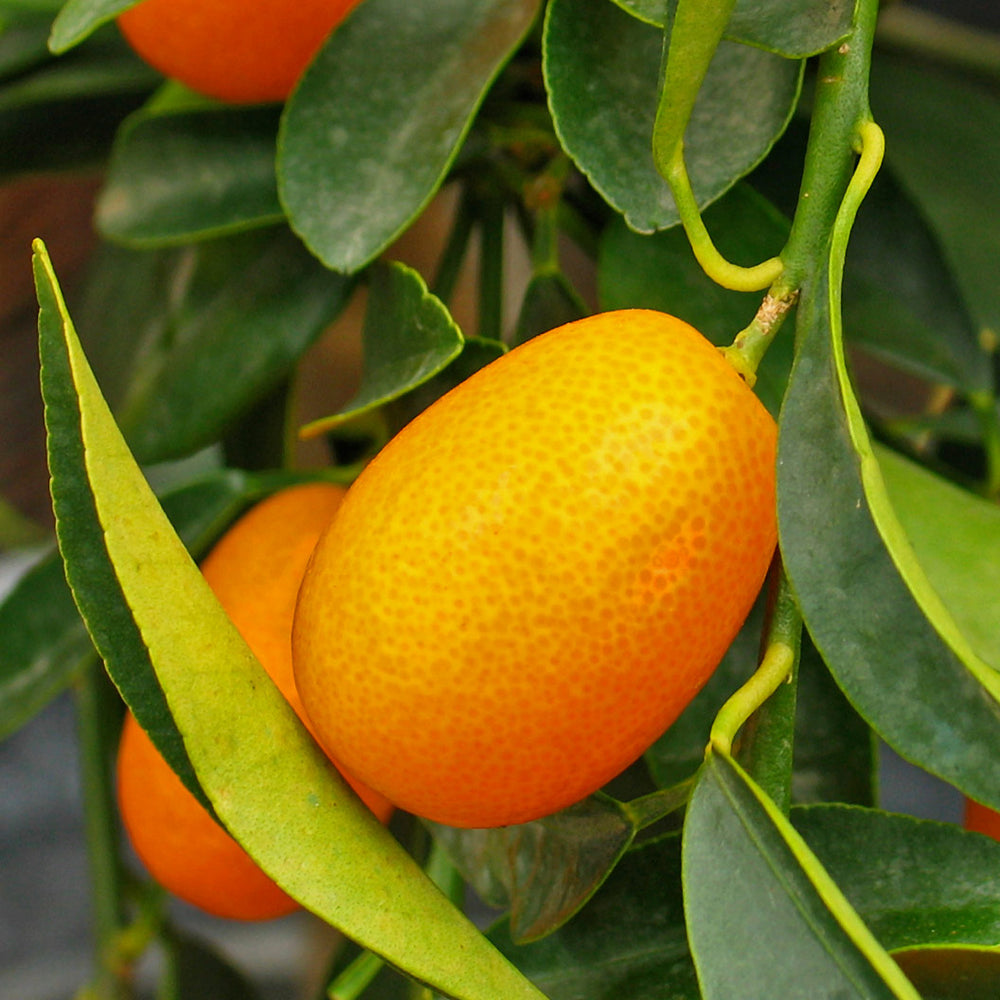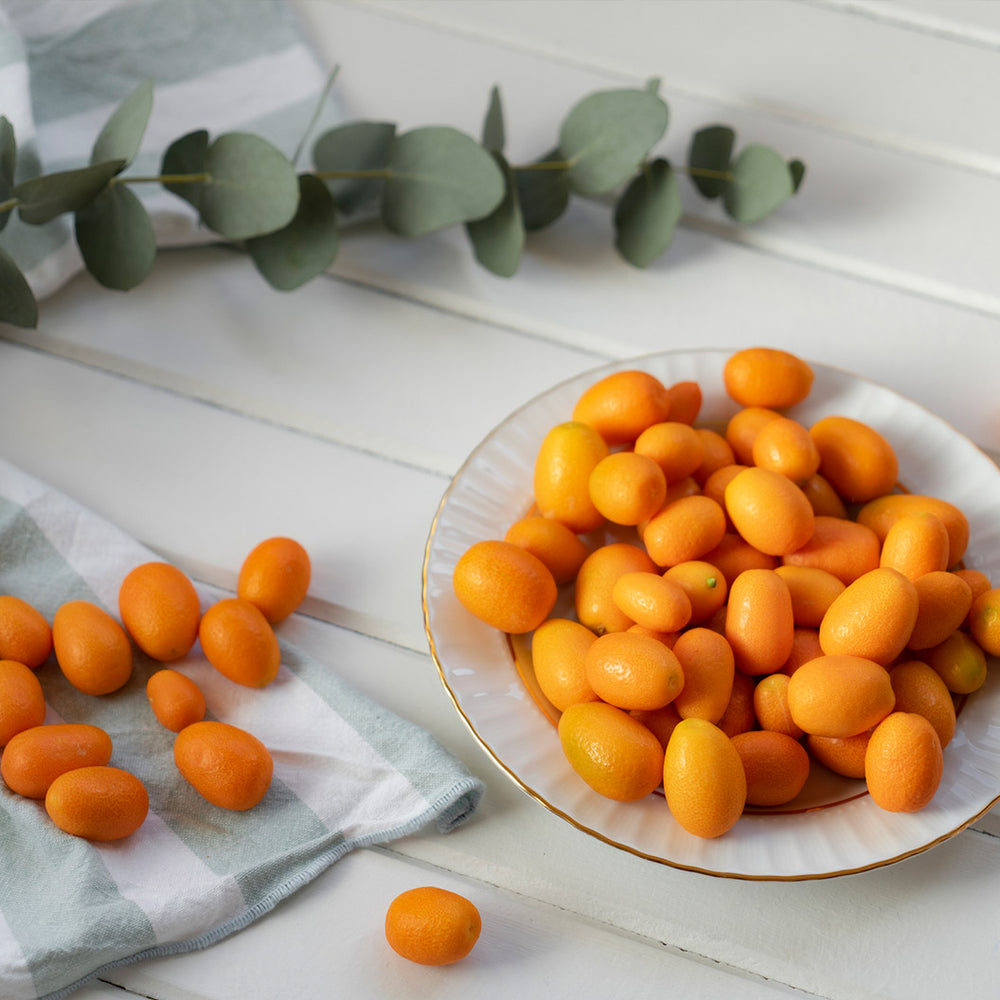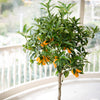* Images shown are of mature plants

Have questions? Talk with our Plant Experts (800) 973-8959
Enjoy Sweet, Edible Kumquats Year-Round
The Meiwa Sweet Kumquat is a must-have for citrus lovers, offering a deliciously sweet alternative to the more common kumquat varieties. Unlike the tangy Nagami Kumquat, Meiwa's golden-orange fruit is larger, with a sweet, edible rind and juicy flesh that provides a burst of flavor.
This small, evergreen tree features glossy, dark green foliage and fragrant white blooms that arrive in spring, followed by fruit that ripens from December through April. The Meiwa Sweet Kumquat is a natural hybrid, first cultivated in Japan, and is prized for its minimal seeds and easy growth in a home environment.
The Meiwa Kumquat trees bloom and fruit sooner than seed-grown trees, making them the ideal choice for those seeking a quick and healthy citrus snack or a vitamin C boost in the colder months. Don't miss out on this popular citrus tree. Grow yours today!
Pollination Info
Meiwa Sweet Kumquat Tree Pollination
Meiwa Sweet Kumquat Trees are self-fertile. You will get fruit with only one plant. However, adding an additional Meiwa Sweet Kumquat Tree will drastically increase the size of your crop.
Planting & Care
1. Planting: Choose a spot that receives full sun for your Meiwa Sweet Kumquat, either in the ground or in a container. This tree prefers well-drained soil, so avoid areas where water might pool. Dig a hole twice as wide and as deep as the root ball, then place the tree in the hole and backfill with soil, ensuring the tree is upright and stable.
If planting in a container, select one with drainage holes and ensure it’s large enough to accommodate root growth.
2. Watering: After planting, water thoroughly to help establish the roots. For container-grown trees, allow the soil to dry slightly between waterings to prevent root rot. During the growing season, water deeply once or twice a week, adjusting for rainfall and indoor conditions.
3. Fertilizing: Fertilize with citrus mix 3-4 times per year in late winter (Jan-Feb), late spring (May-June), and early fall (Sept-Oct).
4. Pruning: It’s best to prune in late winter or early spring before new growth begins. Remove any dead, damaged, or crossing branches to improve airflow and light penetration.
5. Pollination: This tree is self-pollinating, so you will get fruit with just one tree.
Shipping Details
Estimated Shipping Time: Most orders ship immediately. As noted on the website, some items are seasonal, and may only ship in spring or fall. Once your order is shipped, you'll receive an email with a tracking number.
| Amount of Order | Shipping Charge |
|---|---|
| Less than $49 | $19.95 |
| $49 + | FREE SHIPPING! |
Product Details
| Mature Height: | 4-8 ft. |
| Mature Width: | 4-6 ft. |
| Sunlight: | Full Sun |
| Growth Rate: | Moderate Growing |
| Botanical Name: | Fortunella crassifolia |
| Does Not Ship To: | AK, AL, AZ, CA, FL, HI, LA, MS, OR, TX |
| Grows Well In Zones: | 7-10 patio / 9-11 outdoors |
| Your Growing Zone: | # |






